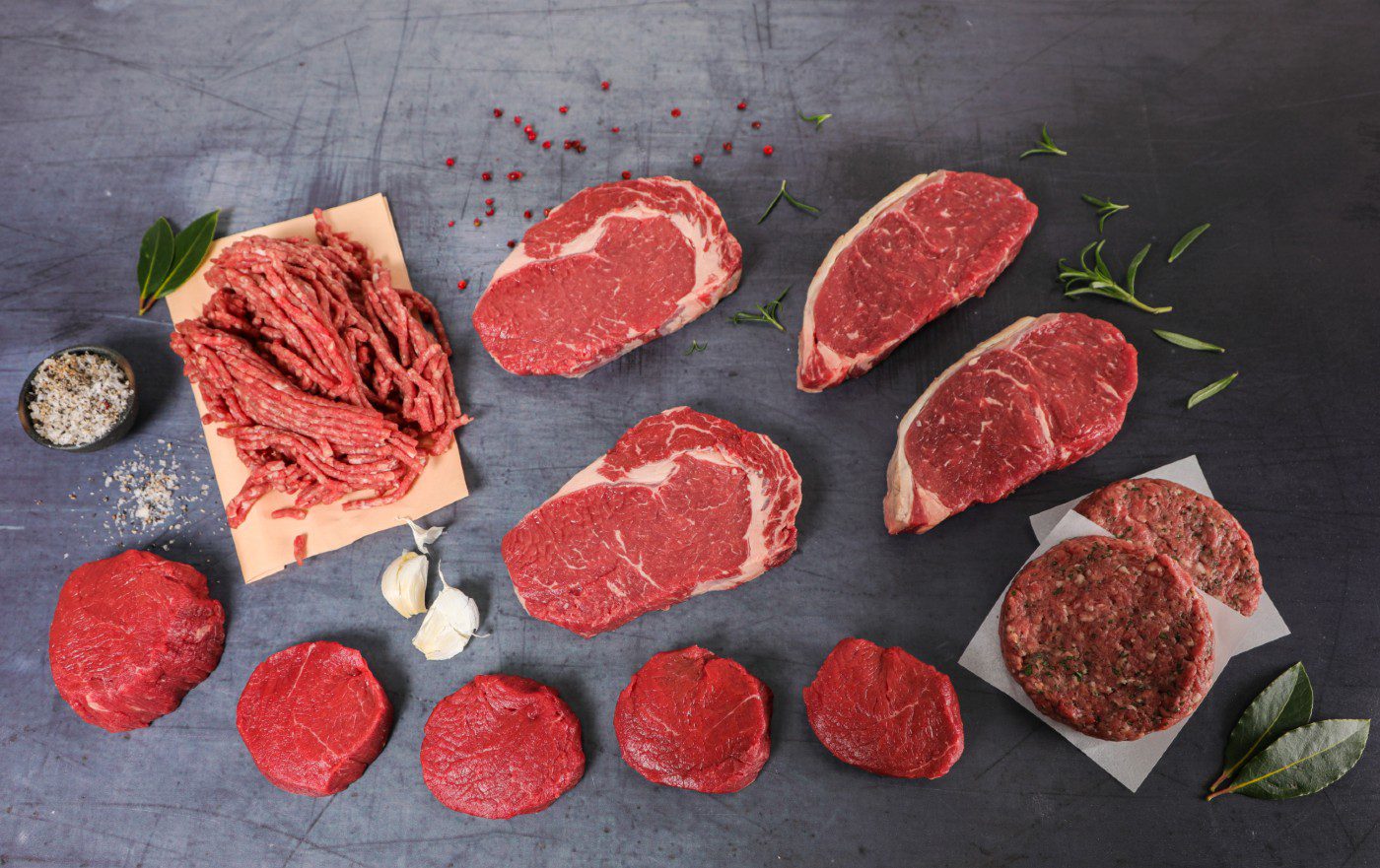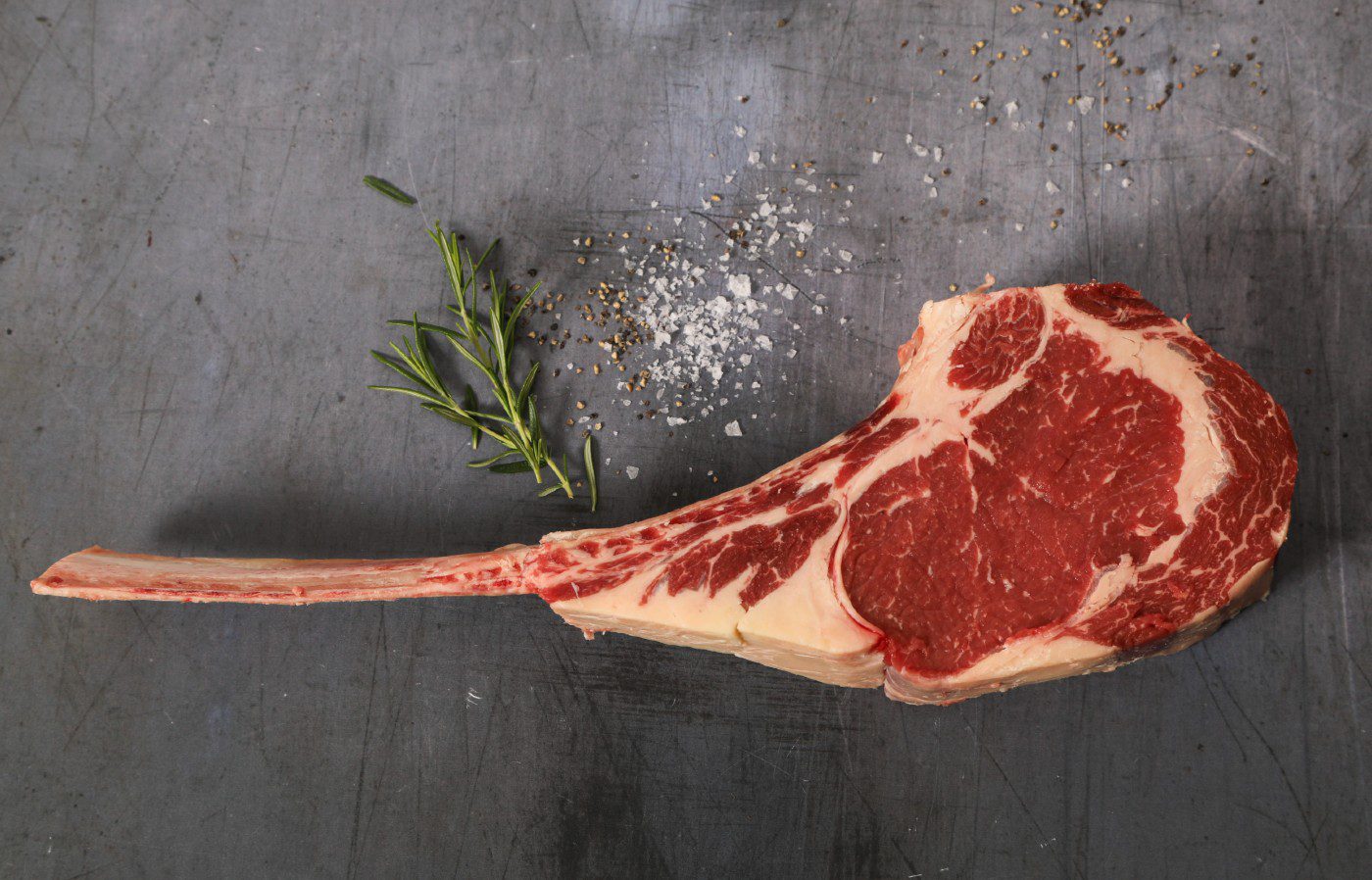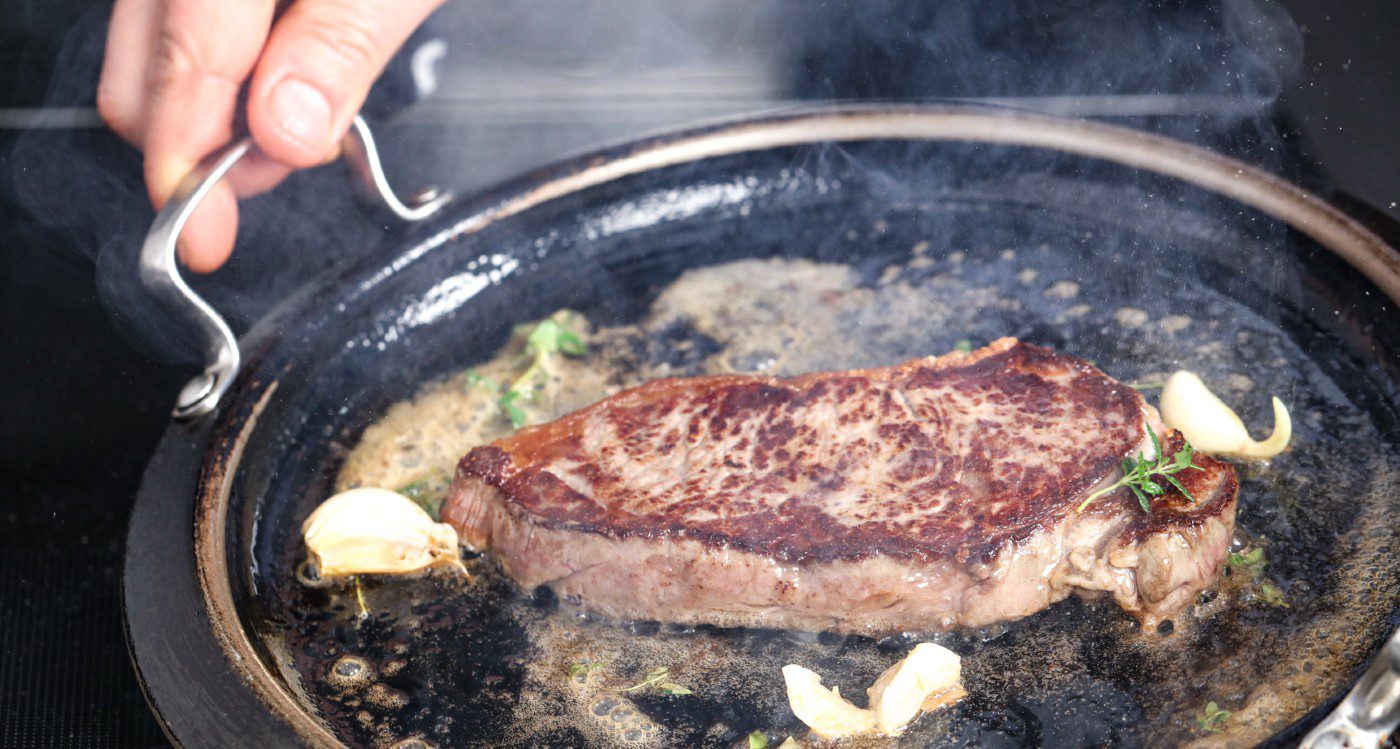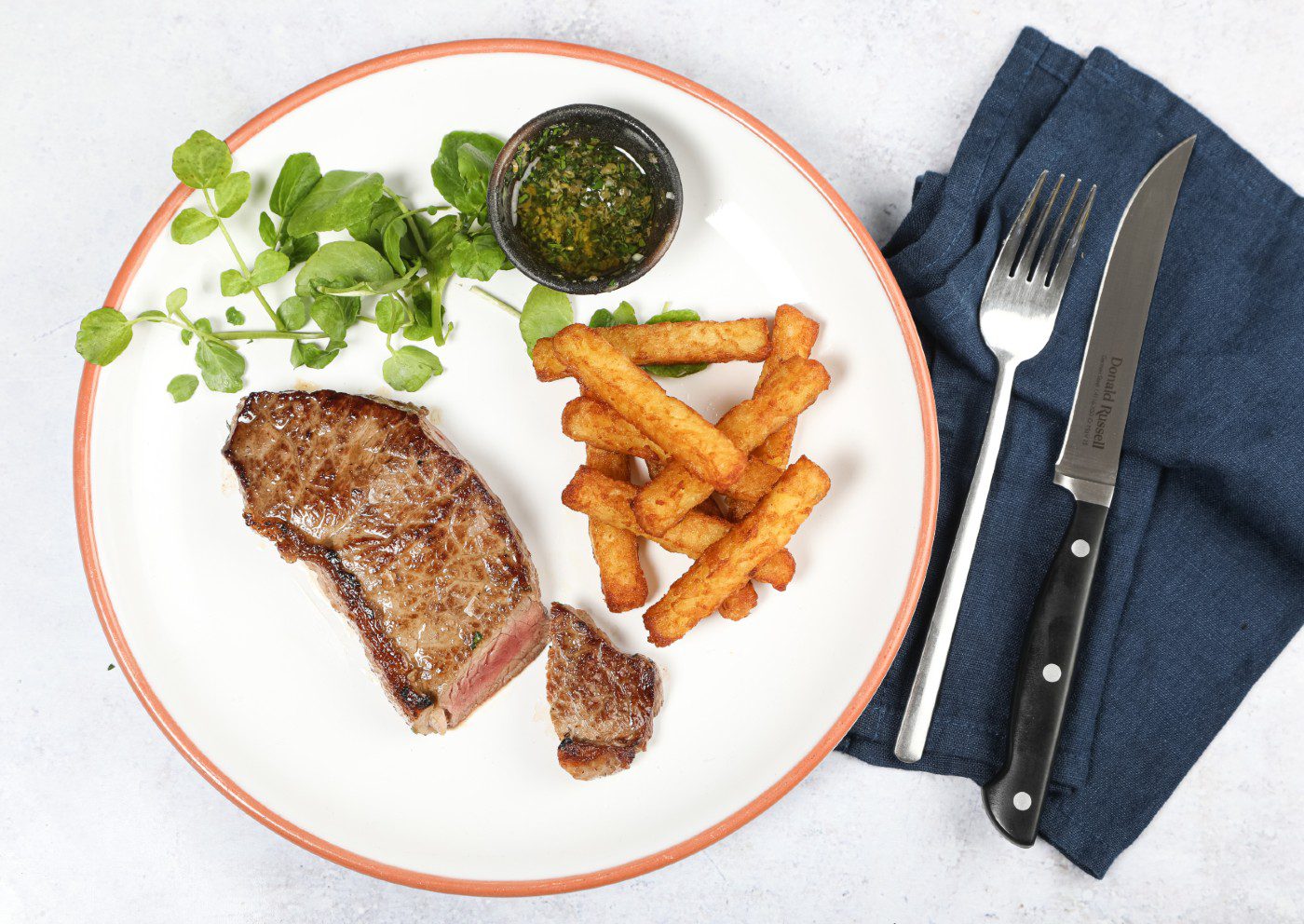Donald Russell Centre Cut Beef Shin
Top Scottish butcher's guide to everything you need to know about steak
Following National Butcher's Week, Royal Warrant holder and direct-to-home delivery butcher experts Donald Russell give us the lowdown on everything you need to know about steaks.
With a recent study finding that over half of Scots are missing out on valuable advice and information when buying meat and that now nearly two-thirds of the population buy their meat at a supermarket as ease trumps quality, the Scottish craft butcher has created a guide to give people a better understanding of what they are buying and eating when it comes to premium cuts of meat. The research, which was unveiled during National Butcher's Week (9th-15th March) , showed that most consumers buying meat from their local supermarket are sceptical of the quality and would prefer more trusted advice on what to choose. Over three quarters (78 per cent) of Scottish meat shoppers trust butcher quality above supermarkets. Nearly three quarters (73 per cent) of meat-eating Scots choose the same meats every time, despite 77 per cent claiming they would like to try new meats and explore different meat cut options. A whopping 83 per cent of respondents stated they bought fresh meat with the intention of freezing at home, yet nearly half (42 per cent) worry about the health implications this would have, demonstrating supermarket labelling is not detailed enough for consumer confidence. Whether it's asking for information on how to cook each cut right or simply how to choose the perfect steak, here the experts at Donald Russell give their advice. Dry-ageing: This traditional method sees cuts of beef stored in a specially constructed room where all aspects of the environment are strictly regulated; temperature, humidity, air circulation and bacteria levels. The process works on two levels, firstly, the moisture evaporates from the muscle leading to a more concentrated flavour and taste. Secondly, the beef's natural enzymes break down the connective tissue in the muscle, without spoiling the meat, which leads to more tenderness. This process can run from anything from 21 days to as long as 42 days. Wet ageing: Wet-aged beef will typically be aged in a vacuum-sealed bag to retain its moisture. This is the dominant mode of ageing beef in the Americas and is very popular in Argentinian style steak restaurants. Cuts on the bone: this refers to quite literally cuts of beef on the bone, such as a tomahawk steak. Marbling: This refers to the intramuscular fat which is, ideally, evenly dispersed within the meat. Wagyu: This term usually refers to Japanese breeds of cattle that are known for their intense marbling. Grass-Fed: Cattle that have been raised exclusively on forage from pasture. Grain-Fed: Cattle raised primarily on grass, but they are usually fed with grains later in life to fatten them up. Bone marrow: The flexible tissue found in the interior of bones. sometimes used as an accompaniment to steak Blue: Nearly raw, cooked for a very short time. Tomahawk Steak: This dramatic steak is basically a rib steak with a long section of the rib bone attached. It's got Ribeye Steak: If you picture the classic carvery rib roast, the ribeye is cut from the central muscle of this. It's got a really rich flavour and juicy texture, largely due to the small 'eye' of fat running through the steak. It's best cooked to at least medium-rare, to give this fat time to render down and add that Rib Steak: This is simply a thicker cut Ribeye Steak with a short piece of the rib bone attached – a bit like a mini Tomahawk. Sirloin Steak: The sirloin is cut from a relatively unworked muscle, which means it's got fantastic tenderness – second only to fillet. Full, rich flavour means this is a really popular option in restaurants. T-Bone Steak: This bone-in cut includes a section of the fillet and a section of sirloin, separated by a T-shaped bone (hence the name). It's similar to a Porterhouse steak, which has only sirloin without the fillet. Chateaubriand: This tender, luxurious steak for two is actually more of a mini roast. A whole beef fillet has a pointed end (the 'tail') and a blunt end (the 'head'). Chateaubriand is cut from the fillet head and has all the luxurious tenderness you'd expect from this prized cut. Centre Cut Fillet Steak: Possibly the most prestigious steak of them all, this is sliced from the premium centre of the fillet, between the head and the tail. It's traditionally cut into thick, cylinder-shaped steaks that are the ultimate in tenderness. Skirt Steak: Skirt Steak is cut from the diaphragm area, and is a long thin steak with a loose grain. It's got a really rich, beefy flavour, and is best cooked rare. Flank steak is similar, but a little thicker and wider, and can be tough unless it's cut across the grain. Pavé Rump Steak: A 'classic' rump is cut straight across the full face of the rump, and includes a fair bit of fat and gristle. The 'pavé' is cut only from a single muscle of the rump, and is trimmed of all fat, making it a much more tender option than a classic rump. Its name comes from the French for cobblestone, whose shape it resembles. When shopping for steaks lookout for grass-fed Scottish beef – grain-fed is inferior in flavour and quality. Try to buy properly matured meat - maturation deepens the flavour and makes steak more tender. Look for a good maturation time. It's expensive to do and many places stint, but as a rule, we suggest: · 21 days for fillet · 28 days for sirloin · 35 days for rump and ribeye Look for a dark red colour – bright red suggests the meat has not been properly matured. Look at sell-by dates – some supermarket steaks might have been sitting around for a while. Don't be afraid of professionally frozen steak! You'll lose some quality by freezing it yourself, but a professionally frozen steak will eat better, and you can always tell how long it has been matured for. First off, buy good quality meat where you can, use online services like ours, or your local butcher where possible so you can be assured of its provenance. Make sure to bring any of your cuts to room temperature before you cook. About 20 minutes before you start cooking, remove the defrosted meat from its vacuum packaging and pat dry with kitchen paper. Spread out your steaks on a board in a single layer to 'bloom' and come to room temperature. Use a little vegetable oil or butter – in the pan or brushed on the steak, then make sure your pan is hot – you should hear a sizzle as you add the steak. Using a pan which is not hot enough can cause toughness. Cook for the recommended time for your preferred finish – you'll find it here: https://www.donaldrussell.com/pan-frying You can also season to your preference here with salt and pepper, or other ingredients here - during or after cooking, not before. Rest the steak for at least 5 minutes after cooking and use a sharp, unserrated knife to cut it – never 'saw' at your steak. Beef Rump cap: Also known as 'picanha', this roast is deeply flavoured and responds fantastically to low-temperature cooking. Also available as a steak. Skirt Steak: Loose grained and super tender, this is best cooked really rare. Bone-in Beef Shin: Cook low and slow for fantastic chilli. Lamb Neck Fillet: A fantastic cut for casseroles. Brisket: Sounds old fashioned, but this flavoursome cut is experiencing a renewal as fabulous 'pulled beef'. Chuck Eye Steak: Cut from where the ribeye meets the chuck, or shoulder, this has all the great flavour and juiciness of ribeye, with a little more bite and a better price point. Lamb Leg Steak: Cut from a cross-section of the upper leg, these contain a circle of bone and marrow for extra flavour. Bavette Steak: A delicacy in Mexico and Latin America, these are lean and firm with a long grain.Terminology
fantastic marbling and looks mightily impressive on a bbq!
spectacular juiciness. A Butcher's guide to buying steak


Cooking the perfect steak


Change things up: the top 'new cuts' of meat to try
For more recipes and tips visit www.donaldrussell.com
Source: https://foodanddrink.scotsman.com/producers/farming-producers/top-scottish-butchers-guide-to-everything-you-need-to-know-about-steak/
0 Response to "Donald Russell Centre Cut Beef Shin"
Post a Comment